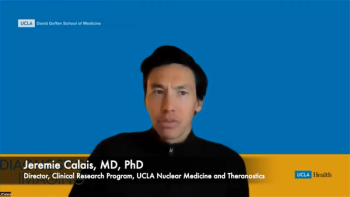
Institutions Rarely Used Reduced Dose Protocol in Renal Colic CT
Discrepancies in dose among institutions reveal underutilization of reduced-dose techniques.
Institutions were found to frequently have mean institutional dose-length products of greater than 200 mGy per cm for patients undergoing renal colic protocol CT examinations, indicating that reduced-dose protocols are used infrequently, according to the results of a study published recently in
According to the study, 1.8 million renal colic CT examinations were performed between 2005 and 2007 in patients presenting to emergency departments in the United States.
“While CT is accurate for diagnosis of kidney stones, CT involves ionizing radiation that is increasingly being discussed as a potential carcinogen,” wrote Christopher L. Moore, MD, of the department of emergency medicine at Yale University School of Medicine, and colleagues. “Previous studies have shown that reduced-dose CT studies are accurate for the detection of renal stones.”
However, it is currently not known how frequently these reduced-dose protocols are employed. To determine which radiation dose indexes are used for renal colic CT examinations, Moore and colleagues studied data from the Dose Imaging Registry (DIR), which collects CT examination type and dose data from participating institutions.
Specifically, the researchers included CT dose indexes for renal colic protocols at institutions with at least 10 studies contributed to the database as of January 2013. The researchers also collected information on patients undergoing CT for renal colic at a single institution to explore individual CT dose index patterns.
Data from 49,903 CT examinations at 93 institutions were included in the study. Institutions contributed an average of 268 examinations each.
The mean dose length product for all 93 institutions combined was 746 mGy per cm (effective dose, 11.2 mSv); the mean institutional dose length product had a range from 307 mGy to 1,497 mGy per cm depending on the institution.
“The variation in dose length product between institutions is not primarily due to differences in axial examination lengths, as the median institutional estimated CT dose index differed as much as sixfold, from 4.9 mGy to 32.3 mGy,” the researchers wrote. “That some institutions can, on average, perform a study for similar indication with less than 20 percent of the dose used at other institutions, suggests that dose index for renal colic protocol CT is not as low as reasonably achievable at many U.S. centers.”
The researchers found that only 90 CT examinations (0.2 percent of the total) were performed with dose length product of 133 mGy per cm or less (2 mSv) and 1,010 (2 percent) were performed at 200 mGy per cm or less (effective dose of about 3 mSv or less). Only 10 percent of institutions kept the dose length product at 400 mGy or less in at least 50 percent of patients.
When looking at individual examinations, the researchers used data from 513 patients who underwent renal colic CT examinations. The mean age of patients was 44 years and 49 percent were women. The mean dose length product among these examinations was 749 mGy per cm.
“Our results suggest that reduced-dose techniques for renal colic protocol CT studies are underused, and dose indexes could likely be lowered substantially, particularly at institutions with very high mean dose indexes,” the researchers wrote.
Newsletter
Stay at the forefront of radiology with the Diagnostic Imaging newsletter, delivering the latest news, clinical insights, and imaging advancements for today’s radiologists.




























